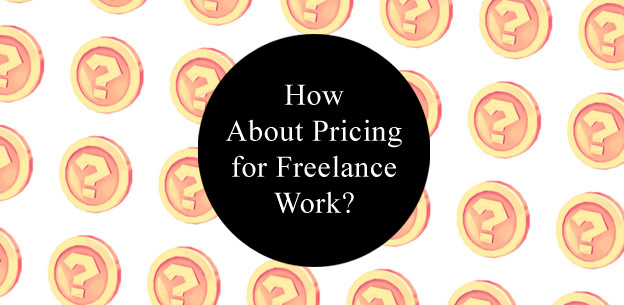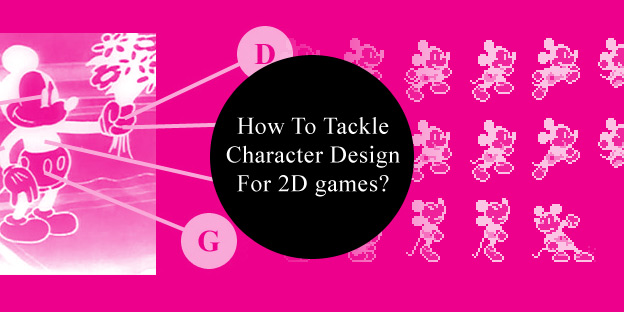Hi Anjin,
I have a fairly uncommon question, and it’s okay if you don’t want to answer — or just give me a general answer perhaps. I am an illustrator and you are the only person I could find, who may know about character guidelines or design sheets. How much would you/one charge for a short character design guideline, two or three pages. Only colors, proportions, angles.Thanks a lot! Have a nice day,
Jon
Hey Jon,
actually that question is not uncommon at all. “Hey, I got a request to do X, what should I charge for X?” I get this quite often, mostly from beginners such as former art students of mine starting to get contract work. Uncommon however is that I get the question from an experienced artist like yourself. I checked your portfolio – good stuff BTW – and you already did quite a few things and should have a pricing policy already. But I will see, if I can help you out with a few thoughts here.
However I wont drop my numbers here. It’s not good policy to publicly name your prices, since it’s a matter of negotiation between me and my client. Aaaaaaannnd I will also address this question for beginners, so that this post is helpful to more people. So, please excuse some basic knowledge drops, it’s not meant to be patronizing to you. I just want to be thorough.
Let’s jump in….
Pricing for freelance work is always a combination of the work hours you spent on creating the design plus the licensing fees for how the design later will be used by the client. Basically it’s a combination of how much work you did plus how much worth that work is for the client.
When thinking about licensing I look at the briefing and talk to my client to find out if they want to hire me to do content creation or to do IP/CI development. IP stands for intellectual property and CI is short for corporate identity, both are trademark designs [trademarks on wikipedia]. What happens in those cases is that I would create designs that will be used in a big way and long term to give a face and name to a product, service, or story franchise. While content creation is more about filling a single piece of media with content.
For example:
If a TV network asks me to design the titular hero for a new tv kids show (I wish), that would be IP development. That character would – just as the name and logo of that show – be part of visual trademark of the show. But if that network goes to me and says in episode 26 we need a villain for that epidsode and nobody will give a shit 3 episodes later, one could argue that is content creation.
So for you Jon, I recommend you take the same approach to pricing as you would do with the development of a corporate identity and the creation of a style guide for using that CI. I don’t know what your modus operandi is for CI work, but I don’t see any reason pricing CI work differently from IP development.
For people who have no clue how to price any of this, meaning beginners:
1. Pricing should at least allow you to sustain yourself and have a couple of bucks left for fun stuff, like going to the movies. So calculate what you need per month and this is your rock bottom income. Include everything in that calculation, groceries, rent, insurances, social activities…be thorough.
2. Remember that you as a freelancer have plenty of unpaid work. Such as client acquisition, practice, studio maintenance. Your clients need to give you enough money to make that work. This means if in a good months you have like 15 paid days of work, the other 5 days need to be paid as well. Adjust your price per day accordingly. Your client work days need to pay for non-client work days too.
3. If a client does not respect your right to sustain yourself as a freelancer – if the client is not willing to pay your rock bottom daily rate, SAY NO! Saying no, is one of the most important skills you need to have as a freelancer. You can’t block yourself from good paying contracts by being stuck in work for shitheads who want to exploit you.
Doing a low pay job is a desperation move or emergency measure – I did it myself, when times have been tough – but it’s NOT what people should expect from you. Clients should respect your right to eat and have roof over your head, or they are shitty clients.
Say no.
4. Now I can only speak from my experience: Content creation is my regular daily fee, which I do under so called work for hire contracts [work for hire on wikipedia], trademark work however demands more money due to increased use and therefore increased licensing fees.
Clients prefer work for hire conditions still, but my daily fees go up quite a bit. My IP/CI development work days are roughly 180% of what I take for content generation. The nice thing is that my clients so far really have no problem understanding why, which is a benefit of being established in the business. If you are a beginner clients will try to play dumb to trick you into being less expensive, so you need to have your arguments ready (trademarks have bigger licensing value and therefore you demand more money creating them).
5. Try to increase your pricing with each new client. Don’t be greedy, but put a couple of % on your daily rates with a new client to slowly but surely push you into a realm where you can live comfortably from your quality work. If it’s too much for a client – not all clients have the same budget available – you can be generous and lower your prices for them, but make sure they respect your value and never drop below rock bottom.
Hope that helps. If you have any follow up questions, hit the comments. I’m also interested in other practices and what works for you, if you do it differently.
Cheers.




